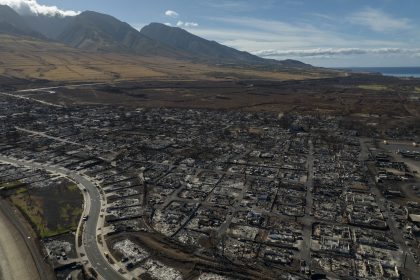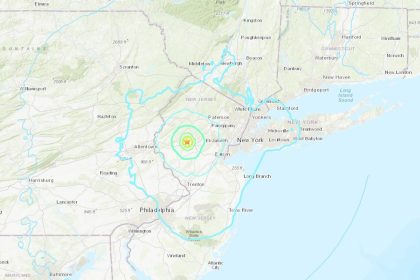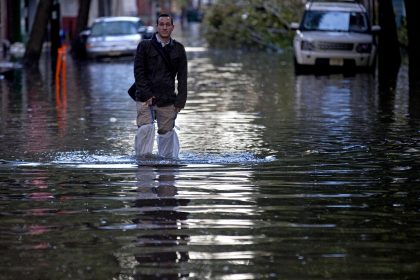Army Corps Proposes $52B ‘Sea Gate’ Plan to Protect New York From Storm Surge

NEW YORK — As a major hurricane bears down on Florida, the U.S. Army Corps of Engineers is floating a $52 billion proposal to protect New York City and surrounding communities from the destructive storm surges associated with hurricanes and other significant storms.
The Corps’ proposal, outlined in a 549-page report, calls for the construction of a dozen moveable sea barriers across the mouths of bays, inlets and creeks along New York Harbor.
The proposal is actually the second plan the Corps has come up with to protect the region in the wake of Hurricane Sandy, which caused devastating flooding to coastal New York and New Jersey in October 2012.
The storm resulted in the deaths of 44 city residents and inflicted an estimated $19 billion in damages and lost economic activity across the metropolitan area.
Most significantly, according to the city, over 69,000 residential units were damaged, and thousands of New Yorkers were temporarily displaced.
The Corps’ first plan called for a single large movable gate, which would stretch across outer New York Harbor, from the Rockaway peninsula in Queens to Sandy Hook in New Jersey.
But it was shelved by the Trump administration, which balked at the estimated $119 billion cost and the notion that it would actually work.
The new proposal would consist of a series of sea gates anchored in Brooklyn, Queens, Staten Island and New Jersey that would be closed only ahead of major storms.
In addition the plan calls for the creation of over 30 miles of new land-based levees, elevated shorelines and sea walls.
If Congress approved the proposal, the federal government would pay 65% of the cost, with state and local governments having to pick up the rest.
Tyler Taba, senior manager for climate policy at the nonprofit Waterfront Alliance in New York City, said the organization is pleased to see the Corps shift away from a storm surge barrier at the mouth of the New York-New Jersey harbor, to a more hybrid approach “of green and gray infrastructure solutions.”
“We continue to echo our support for a phased approach that incorporates more natural and nature-based features. We particularly encourage a closer look at buyouts, restored natural areas, elevation or relocation of infrastructure, and non-physical nonstructural measures,” Taba said.
He also noted that one of the greatest challenges for the Corps’ is public engagement and communication with all the stakeholders across the region who will be affected by the project.
“In a region of 16 million residents, the study’s engagement methods relied on nine public workshops at which there were only 705 attendees,” he said. “The need for the Corps and non-federal sponsors to engage with the public, especially those most affected by climate change in this study development, is also reflected in section 3 of the Water Resources Development Act (WRDA) of 2020.”
Taba said the Waterfront Alliance is currently reviewing the Corps’ draft plan in partnership with members of its Rise to Resilience coalition and “looks forward to sharing more in the coming weeks.”
The Corps estimates it would be finished by 2044 and would save an average of $6.2 billion in flood damage a year for the next five decades.
The Army Corps is soliciting public feedback on their report through Jan. 6, 2023, in order to refine their proposal.
It anticipates beginning its final designs for the plan in 2025 and starting construction in 2030.
Comments should be submitted to: Bryce W. Wisemiller, Project Manager, U.S. Army Corps of Engineers New York District, Jacob K. Javits Federal Building, Room 17-401, c/o PSC Mail Center, 26 Federal Plaza, New York, New York 10278, 917-790-8307, [email protected].
Dan can be reached at [email protected] and @DanMcCue























